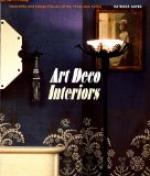The work was entitled “The Gentleman and Cabinet-maker’s Director and Useful Designs of Household Furniture in the Gothic, Chinese and Modern Taste” (and there was still more to the title!).
Chippendale’s genius lay in taking the best wherever he found it and blending the whole into a type so graceful, beautiful, perfectly proportioned, light in weight and appearance, and so singularly suited to the uses for which it was intended, that it amounted to creation.
The “Chinese Craze” in England was partly due to a book so called, written by Sir William Chambers, architect, who went to China and not only studied, but sketched, the furniture, he saw there.
Thomas Sheraton, we are assured, was the most cultivated of this group of cabinet-makers. The three men made both good and bad styles. The work of the three men can be distinguished one from the other and, also, it can be very easily confused. To read up a period helps; but to really know any type of furniture with certainty, one must become familiar with its various and varying characteristics.
The houses and furniture designed and made by the Adam brothers were an epoch in themselves. These creations were the result of the co-operation of a little band of artists, consisting of Michael Angelo Pergolesi, who published in 1777, “Designs for Various Ornaments”; Angelica Kauffman and Cipriani, two artist-painters who decorated the walls, ceilings, woodwork and furniture designed by the Adam brothers; and another colleague, the great Josiah Wedgwood, whose medallions and plaques, cameo-like creations in his jasper paste, showed both classic form and spirit.
The Adam brothers’ creations were rare exotics, with no forerunners and no imitators, like nothing the world had ever seen—yet reflecting the purest Greek period in line and design.
One of the characteristics of the Mahogany Period was the cabriole leg, which is, also, associated with Italian and French furniture of the seventeenth and eighteenth centuries. As a matter of fact this form of leg is as old as the Romans and is really the same as the animal legs of wood or bronze, used as supports for tripods and tables by Assyrians, Egyptians and Greeks. The cabriole leg may be defined as “a convex curve above a concave one, with the point of junction smoothed away. On Italian console tables and French commodes we see the two simple curves disguised by terminal figures.”
The rocaille (shell) ornament on the Chippendale as well as the cabriole leg copied from Italy and France, and the Dutch foot from Holland, substantiate our claim that Chippendale used what he found wherever he found it irrespective of the stigma of plagiarism.
There is a beautiful book by F.S. Robinson in which the entire subject of English furniture is treated in a most charming fashion.
Now let us return a moment to the Jacobean period. It was under Charles I that couches and settles became prominent pieces of furniture. Some of the Jacobean chairs are like those made in Italy, in the seventeenth century, with crossed legs, backs and seats covered with red velvet. Other Jacobean chairs had scrollwork carved and pierced, with central panel in the back of embroidery, while the seat was of cane.




